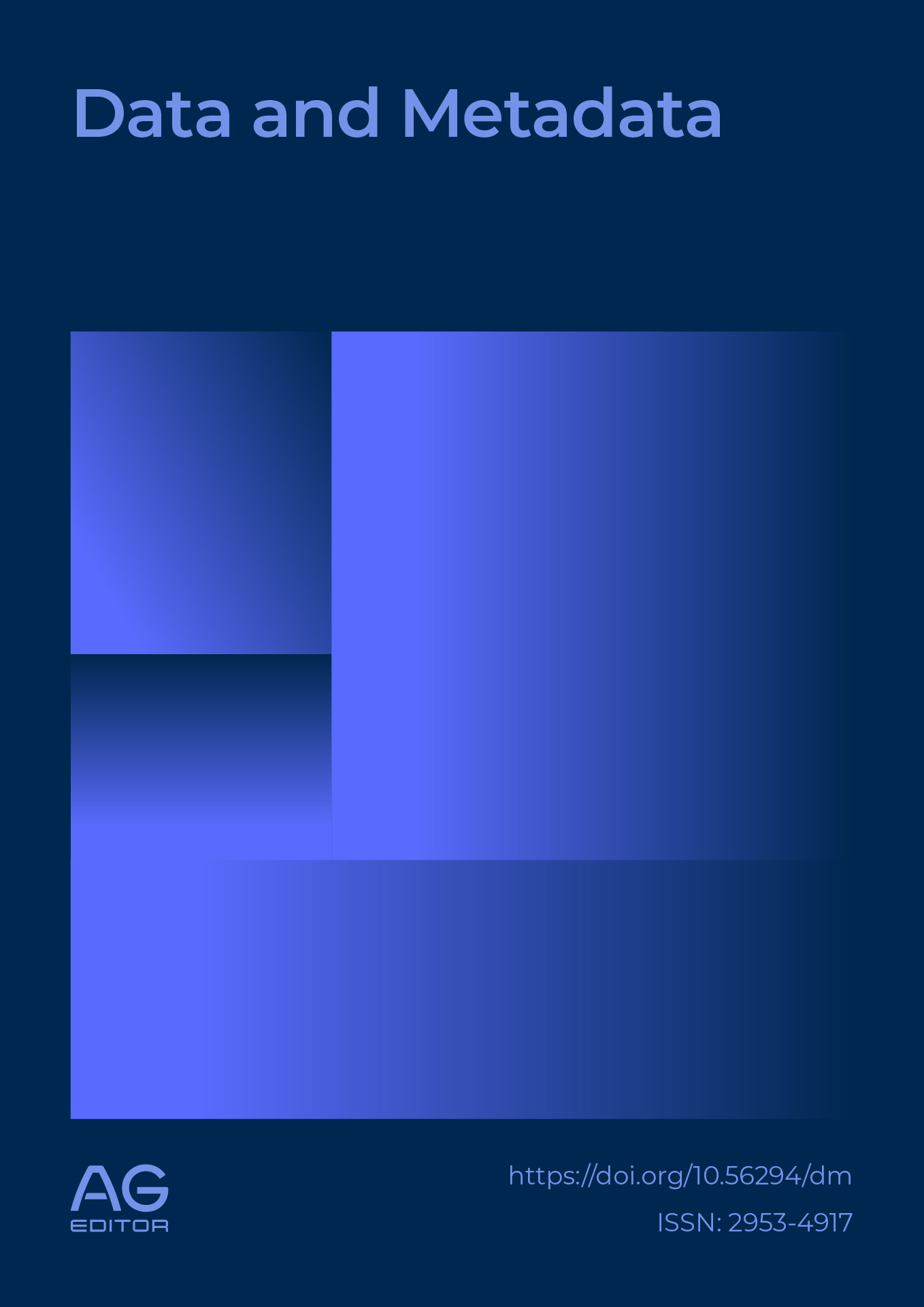LDCML: A Novel AI-Driven Approach form Privacy-Preserving Anonymization of Quasi-Identifiers
DOI:
https://doi.org/10.56294/dm2024287Keywords:
Data Privacy, Data Analysis, Data Processing, L-Diversity, Machine Learning, Clustering AlgorithmsAbstract
Introduction: the exponential growth of data generation has led to an escalating concern for data privacy on a global scale. This work introduces a pioneering approach to address the often overlooked data privacy leakages associated with quasi-identifiers, leveraging artificial intelligence, machine learning and data correlation analysis as foundational tools. Traditional data privacy measures predominantly focus on anonymizing sensitive attributes and exact identifiers, leaving quasi-identifiers in their raw form, potentially exposing privacy vulnerabilities.
Objective: the primary objective of the presented work, is to anonymise the quasi-identifiers to enhance the overall data privacy preservation with minimal data utility degradation.
Methods: In this study, the authors propose the integration of ℓ-diversity data privacy algorithms with the OPTICS clustering technique and data correlation analysis to anonymize the quasi-identifiers.
Results: to assess its efficacy, the proposed approach is rigorously compared against benchmark algorithms. The datasets used are - Adult dataset and Heart Disease Dataset from the UCI machine learning repository. The comparative metrics are - Relative Distance, Information Loss, KL Divergence and Execution Time.
Conclusion: the comparative performance evaluation of the proposed methodology demonstrates its superiority over established benchmark techniques, positioning it as a promising solution for the requisite data privacy-preserving model. Moreover, this analysis underscores the imperative of integrating artificial intelligence (AI) methodologies into data privacy paradigms, emphasizing the necessity of such approaches in contemporary research and application domains
References
1. Priyank J, Manasi G, Nilay K. Big data privacy: a technological perspective and review. Journal of Big Data. 2016 03; https://doi.org/10.1186/s40537-016-0059-y.
2. Biswas S, Fole A, Khare N, Agrawal P. Enhancing correlated big data privacy using differential privacy and machine learning. Journal of Big Data. 2023 March;10.
3. Gehrke J, Lui E, Pass R. Towards Privacy for Social Networks: A Zero-Knowledge Based Definition of Privacy. In: Theory of Cryptography. Berlin, Heidelberg: Springer Berlin Heidelberg; 2011. p. 432–449.
4. Kifer D, Machanavajjhala A. No Free Lunch in Data Privacy. In: Proceedings of the 2011 ACM SIGMOD International Conference on Management of Data. SIGMOD ’11. New York, NY, USA: Association for Computing Machinery; 2011. p. 193–204. Available from: https://doi.org/10.1145/1989323.1989345.
5. Biswas S, Khare N, Agrawal P, Jain P. Machine learning concepts for correlated big data privacy. Journal of Big Data. 2021 december;8.
6. Zheng L, Yue H, Zhaoxuan L, Pan X, Wu M, Yang F. k-Anonymity Location Privacy Algorithm Based on Clustering. IEEE Access. 2017 12;PP:1–1. https://doi.org/10.1109/ACCESS.2017.2780111.
7. Sweeney L. K-Anonymity: A Model for Protecting Privacy. Int J Uncertain Fuzziness Knowl-Based Syst. 2002 oct;10(5):557–570. https://doi.org/10.1142/S0218488502001648.
8. LeFevre K, DeWitt DJ, Ramakrishnan R. Incognito: Efficient Full-Domain KAnonymity. In: Proceedings of the 2005 ACM SIGMOD International Conference on Management of Data. SIGMOD ’05. New York, NY, USA: Association for Computing Machinery; 2005. p. 49–60. Available from: https://doi.org/10.1145/1066157.1066164.
9. Domingo-Ferrer J, Mateo-Sanz JM. Practical data-oriented microaggregation for statistical disclosure control. IEEE Transaction of Knowledge Data Engineering, 14. 2002;p. 189–201.
10. Josep Domingo-Ferrer FS, Solanas A. Microaggregation heuristics for p-sensitive k anonymity; 2007.
11. Machanavajjhala A, Kifer D, Gehrke J, Venkitasubramaniam M. L-Diversity: Privacy beyond k-Anonymity. ACM Trans Knowl Discov Data. 2007 Mar;1(1):3–es. https://doi.org/10.1145/1217299.1217302.
12. Hongwei Tian WZ. Extending l-diversity to generalize sensitive data. Data & Knowledge Engineering, 70. 2011;p. 101–126.
13. Gabriel Ghinita PKNM Panagiotis Karras. Fast data anonymization with low information loss. International Conference on Very Large Data Bases. 2007;p. 758–769.
14. Yuichi Sei TT Hiroshi Okumura, Ohsuga A. Anonymization of Sensitive QuasiIdentifiers for l- Diversity and t-closeness. vol. 16; 2019.
15. Pooja Parameshwarappa GK Zhiyuan Chen. An effective and computationally efficient approach for anonymizing large-scale physical activity data: multi-level clusteringbased anonymization. International Journal of Information Security and Privacy, IJISP. 2020;
16. Pooja Parameshwarappa GK Zhiyuan Chen. Anonymization of Daily Activity Data by using l-diversity Privacy Model. ACM Trans Manage Inf Syst 12. 2021 May;.
17. Ren TXDJea W. Privacy Enhancing Techniques in the Internet of Things Using Data Anonymisation. Inf Syst Front. 2021 06;30. https://doi.org/10.1007/s10796-021-10116-w.
18. Brijesh B Mehta UPR. Improved l-diversity: Scalable anonymization approach for privacy preserving big data publishing. Journal of King Saud University - Computer and Information Sciences. 2022;.
19. Dunbo Cai DX Ling Qian, Huang Z. Towards a Free Text Dataset for Hiding Quasi-Identifiers; 2022. p. 1–6.
20. Sweeney L. Achieving K-Anonymity Privacy Protection Using Generalization and Suppression. Int J Uncertain Fuzziness Knowl-Based Syst. 2002 oct;10(5):571–588. https://doi.org/10.1142/S021848850200165X.
21. Han Jian-min CTT, Hui-Qun Y. An improved V-MDAV algorithm for l-diversity; 2008. p. 733–739.
22. Jain P, Gyanchandani M, Khare N. Differential privacy: its technological prescriptive using big data. Journal of Big Data. 2018 04;5. https://doi.org/10.1186/s40537-018-0124-9.
23. Priyank J, Manasi G, Nilay K. Enhanced Secured Map Reduce layer for Big Data privacy and security. Journal of Big Data. 2019 06; https://doi.org/10.1186/s40537-019-0193-4.
24. Chen J, Ma H, Zhao D, Liu L. Correlated Differential Privacy Protection for Mobile Crowdsensing. IEEE Transactions on Big Data. 2021 oct;7(04). https://doi.org/10.1109/TBDATA.2017.2777862.
25. Yang Xinyu RXYW Wang Teng. Survey on Improving Data Utility in Differentially Private Sequential Data Publishing. IEEE Transactions on Big Data. 2017; https://doi.org/10.1109/TBDATA.2017.2715334.
26. Fei F, Li S, Dai H, Hu C, Dou W, Ni Q. A K-Anonymity Based Schema for Location Privacy Preservation. IEEE Transactions on Sustainable Computing. 2019;4(2):156– 167. https://doi.org/10.1109/TSUSC.2017.2733018.
27. El Ouazzani Z, El Bakkali H. A New Technique Ensuring Privacy in Big Data. Procedia Comput Sci. 2018 may;127(C):52–59. https://doi.org/10.1016/j.procs.2018.01.097.
28. Djoudi M, LyndaKacha, AbdelhafidZitouni. KAB : A new k-anonymity approach based on black hole algorithm. 2021;.
29. Arava K, Lingamgunta S. Adaptive K-anonymity approach for privacy preserving in cloud. 2019;p. 1–8.
30. Raghuraj G, Naikodi DC, L S. K-Anonymization-Based Temporal Attack Risk Detection Using Machine Learning Paradigms. Journal of Circuits, Systems and Computers. 2020 06;30. https://doi.org/10.1142/S021812662150050X.
Published
Issue
Section
License
Copyright (c) 2024 Sreemoyee Biswas, Vrashti Nagar, Nilay Khare, Priyank Jain, Pragati Agrawal (Author)

This work is licensed under a Creative Commons Attribution 4.0 International License.
The article is distributed under the Creative Commons Attribution 4.0 License. Unless otherwise stated, associated published material is distributed under the same licence.




